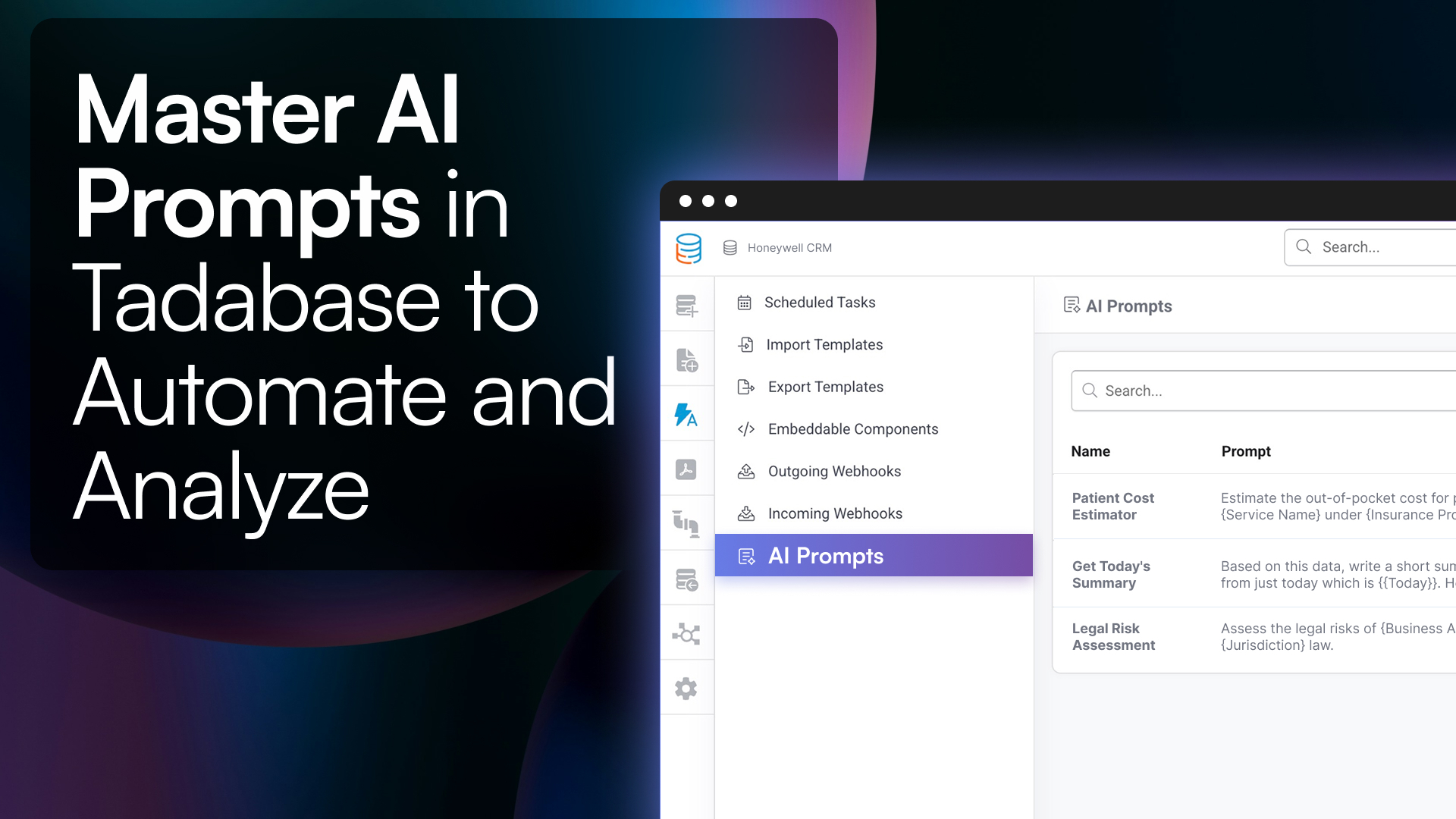Introduction
Running a business is a balancing act of efficiency, growth, and managing day-to-day operations. As businesses scale, many teams are left bogged down by repetitive tasks, manual data entry, and processes that could easily be automated. That’s where business process automation (BPA) comes in.
If you’re wondering whether automation is right for your business, think of it like upgrading from a bicycle to a car: you’re still getting to the same destination, but now you’re doing it faster, more efficiently, and with less effort.
What is Business Process Automation?
Business process automation (BPA) is the use of technology to perform routine, repeatable tasks or workflows with little to no human intervention. By automating these processes, businesses can reduce human error, save time, and allow their teams to focus on higher-value work.
Examples of business processes that are ripe for automation include:
- Invoice generation and approval
- Customer onboarding workflows
- Data entry and updates
- Email responses and notifications
The goal of automating business processes isn’t to replace people but to empower them to spend less time on repetitive tasks and more time on creative, strategic work that drives growth.
Why Automate Business Processes?

For businesses, the benefits of automating processes are immediate and wide-reaching:
- Increased Efficiency: Automation speeds up routine tasks like data entry, making your team more productive.
- Cost Reduction: By automating manual tasks, businesses reduce the time spent on non-value-adding activities, ultimately saving money.
- Improved Accuracy: Automated processes minimize the risk of human error, especially in tasks like financial reporting or inventory management.
- Scalability: As your business grows, automation ensures that processes scale without needing to hire more people or expand resources.
It’s not just large companies that benefit from automation. Small to medium businesses can automate processes and unlock similar efficiencies—giving them a competitive edge and enabling them to scale sustainably.
How to Identify Processes for Automation
Before jumping into automation, it’s crucial to identify the right processes to automate. Not every task is suitable for automation, but many repetitive, rules-based tasks are.
Here are a few questions to help you identify candidates for automation:
- Is the process repetitive and time-consuming? If the task is done daily, weekly, or on a regular basis, it’s likely a good candidate.
- Does it follow a set of clear rules? Automation works best for processes that follow strict, predictable guidelines.
- Does the process involve data entry or movement between systems? Processes that involve data being entered, transferred, or updated are perfect for automation.
For example, customer onboarding workflows are often repeated for each new client. By automating steps like sending welcome emails, assigning tasks, and collecting initial information, businesses can ensure consistency and save time.
Steps to Automate Business Processes
Once you’ve identified which processes to automate, follow these steps to get started:
1. Map Out the Current Process
Before you can automate anything, you need a clear understanding of the process itself. What are the steps involved? What systems and data are used? Mapping out the current workflow gives you a solid foundation to build from.
Tools like flowcharts or process diagrams can help you visualize each step and identify bottlenecks or inefficiencies.
2. Choose the Right Automation Tools
Not all automation tools are created equal. You’ll want to choose tools that align with your business’s needs. For example, platforms like Tadabase offer built-in automation features that allow you to trigger actions based on specific conditions, such as updating records, sending notifications, or generating reports automatically.
If you’re looking for a flexible solution that can grow with your business, consider using tools that integrate easily with other systems, like Zapier, Integromat, or even direct APIs.
- For a deeper dive into how Tadabase handles automation, check out this Automation Overview.
3. Define Rules and Triggers
Once you’ve selected a tool, define the rules and triggers for your automation. For example, what action should happen when a new customer signs up? You might want to trigger an automatic welcome email, assign a task to your sales team, and generate a new customer profile in your CRM.
Automation rules are essentially “if this, then that” statements: If a specific event happens, then trigger a specific action. Tools like Tadabase’s Automation Rules allow you to easily create these triggers without needing any code. For more details, you can refer to this guide on automation rules.

4. Test and Optimize
Before fully implementing automation into your business, it’s important to test the process. Run the automation through its steps and check for any missed opportunities or areas where it could be improved. Optimization is an ongoing process, and as your business grows, so too will the need to revisit and refine your automations.
5. Monitor Performance
Once your automations are live, keep an eye on their performance. Track key metrics such as time saved, process completion rates, and error reductions. Tools like Tadabase offer reporting features that allow you to monitor the effectiveness of your automations and adjust as needed.
Common Business Processes to Automate
If you’re not sure where to begin with automation, here are some common business processes that can benefit from BPA:
-
Customer Service and Support:
- Automating ticket creation, customer replies, and feedback collection.
- Example: A support ticket is automatically generated when a customer submits an issue, triggering an email confirmation.
-
Sales and Marketing:
- Automating lead generation, email follow-ups, and sales reports.
- Example: Automate the collection of leads from your website forms into your CRM and trigger follow-up actions.
-
Human Resources:
- Automating employee onboarding, time tracking, and payroll processing.
- Example: When a new hire is confirmed, automate the onboarding process with welcome emails, document signing, and task assignments.
-
Finance and Accounting:
- Automating invoicing, expense management, and financial reporting.
- Example: Automatically send invoices to clients after a service is rendered, track payments, and update accounting records.
-
Data Entry and Reporting:
- Automating data collection, aggregation, and report generation.
- Example: Use automation to gather data from multiple sources, organize it in your database, and generate weekly or monthly reports.
Avoiding Common Automation Mistakes
While automation can streamline processes, there are pitfalls to avoid:
-
Automating Poorly Designed Processes: Automating a bad process won’t solve underlying issues. Take time to streamline the process itself before automating.
-
Over-Automating: Don’t automate everything. Some tasks require a human touch—especially those involving complex decision-making or customer interaction.
-
Neglecting Regular Reviews: Automation isn’t a “set it and forget it” solution. Regularly review and optimize your automations to ensure they’re working efficiently.
Conclusion

Automating business processes isn’t just about saving time—it’s about freeing your team to focus on work that drives growth. By following the steps outlined above, you can streamline workflows, reduce manual errors, and create a more scalable, efficient business model.
Tadabase makes it simple to automate everything from customer onboarding to complex workflows, all without writing a single line of code. Whether you’re new to automation or looking to scale existing processes, Tadabase provides the flexibility and power to meet your business needs.
Ready to take the next step? Learn more about how Tadabase can help you automate your business here and start simplifying your work today.
Frequently Asked Questions
1. What is business process automation (BPA)?
Business process automation (BPA) is the use of technology to automate repetitive, rule-based tasks or workflows, allowing businesses to reduce human intervention, minimize errors, and improve efficiency. Common examples include automating invoicing, customer onboarding, and reporting.
2. Why should my business automate processes?
Automating business processes reduces manual work, improves accuracy, increases productivity, and allows your business to scale efficiently. It helps free up your team to focus on high-value activities, rather than time-consuming repetitive tasks.
3. What types of processes are suitable for automation?
Processes that are repetitive, follow a set of predictable rules, and involve data entry or movement between systems are ideal for automation. This includes tasks like order processing, data entry, generating reports, and handling customer service inquiries.
4. What tools can help me automate business processes?
Platforms like Tadabase provide comprehensive automation tools that allow you to automate various workflows without coding. Additionally, tools like Zapier, Integromat, and APIs can integrate with other systems for seamless automation.
5. How do I start automating processes in my business?
Start by identifying the most time-consuming, repetitive tasks that follow specific rules. Map out the current workflow, choose the right automation tools, define your triggers, test the automation, and optimize it as needed.
6. What are the common mistakes to avoid when automating processes?
Avoid automating inefficient or poorly designed processes—first, improve the process, then automate. Over-automating can also lead to problems, as some tasks require human intervention. Lastly, regularly review and optimize your automations to keep them efficient.
7. How can I monitor the effectiveness of my automations?
Use tools that provide reporting and analytics features to track key performance metrics, such as time saved, process completion rates, and error reductions. Tadabase, for example, allows you to monitor your automations and adjust as necessary.
8. Can automation help small businesses?
Yes! Small businesses benefit from automation just as much as large enterprises. Automating routine tasks allows small teams to focus on growth and strategic work without needing to hire additional staff.
9. Is automating business processes expensive?
The cost of automating business processes varies depending on the tools and systems you choose. Many no-code platforms, like Tadabase, offer cost-effective solutions tailored to businesses of all sizes, making automation accessible without a large upfront investment.
10. What’s the next step after automating business processes?
Once you’ve successfully automated key processes, continue to identify new areas for automation, regularly review and optimize existing workflows, and scale your automation efforts as your business grows.








